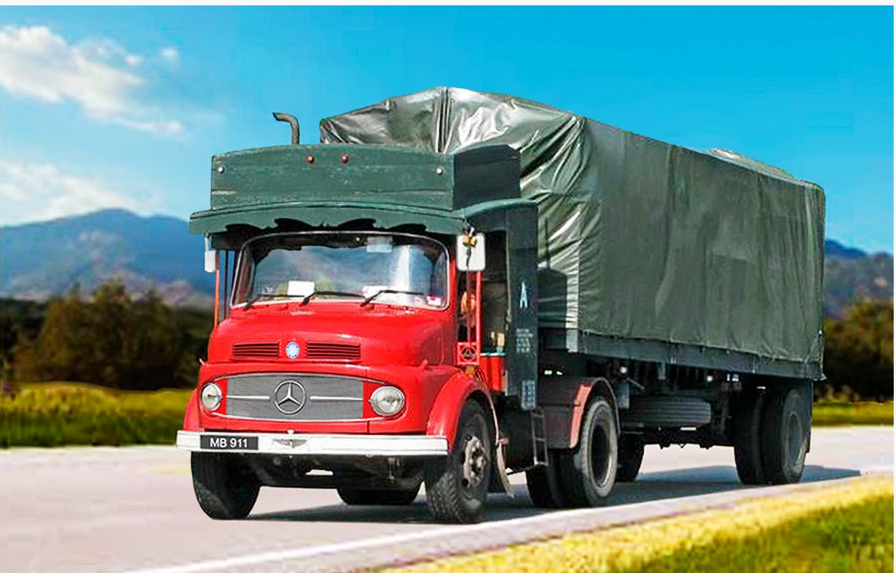
by Sam Trailerman
Of late, heavy vehicles, especially trucks, were in the spotlight, including the fast-breaking social media posts. And often, for the wrong reasons — fatal accidents, over-turned lorries and a truck tyre ripping away that was never to be found during a mishap that killed a family of five and two others at KM 204 of the North-South Expressway near Ayer Keroh recently.
There could be only one simple reason of how and why the tyre broke free: the axle bearings holding the tyre onto the axle must have given way or broken apart.
Axle bearings are some of the crucial parts of a wheel axle. They are designed to help absorb shocks and vibrations from the road, providing a smoother ride and protecting other components from damage. They also help maintain the proper alignment of the wheels, which is essential for safe and efficient driving.
When they start malfunctioning, you can see some visible signs such as uneven tyre wear and unwarranted noise vibrations. Maintenance failure! This is the major issue with most trucks nowadays. In trying to maximise profits, maintenance is often overlooked, I dare say.
It’s just not good enough to have a truck in good condition only during the scheduled six-month inspection by the relevant authorities. Back in the day, it has been common practice each time when a truck came in for an oil-change at every 5,000 km that a proper check was done.
The wheels were jacked-lifted and the grip of brakes adjusted. And there was that simple spinning of the wheel by an experienced mechanic to tell the condition of the axle bearings by just listening to any abnormal sound or a slight wobbling of the wheels.
And if it was a prime mover, grease would be added to the turntable to reduce the drag between trailer and turntable, thus improving truck’s handling and facilitating load stability.
And there was no Puspakom or whatever “com” or “kom” to speak of. Or the need for “cosmetic beauticians” to doll up the commercial vehicles to temporarily fool the vehicle inspectors.
I can say all these because I’ve been driving trailers for 15 years, mostly from Bukit Mertajam, the transport hub for northern Peninsula Malaysia, to Singapore from the mid1970s to the 1990s. Tolled-highways were still in the blueprints. So, a journey could take anything from 18 to 22 hours, depending on the payload.
Why choose a job of spending half of one’s life on the road? Well, jobs were difficult to come by then and since I had a heavy driving licence, I felt it was worth the money. Very good pay, indeed! So, now you know why my byline is Sam Trailerman.
My truck was none other than the famous Mercedes-Benz 911. Please don’t get it mixed up with Porsche’s curvy sports car with the same reference number!
The “911” in its name was used to help identify the truck’s capabilities and specifications easily. Thus, the first digit “9” indicates the truck’s weight class and “11” represents the engine power in tens of horsepower. Therefore, “11” means that the truck has around 110 horsepower!
Mercedes-Benz’s 911 was the favourite workhorse for haulage business owners as well as their drivers because of its reliability and capability. From the 1960s to perhaps the early 90s, this extended 10-wheeler was somehow christened as “Treler Panjang” (Long Trailer) that dominated the big-truck industry.
Whether negotiating tight hairpin turns or labouring the steep gradient of Bukit Berapit with a payload of 22 tonnes, it was “sap sap sui” or no big deal for the 911.
Originally built as a Mercedes-Benz “Kurzhauber” for short-nose or short bonnet trucks, it was quite different from the long-nose ones of its time.
A popular choice for heavy-duty tasks, it was the awesome workhorse of the trucking industry. It transported everything from logs from remote jungles to fresh catch from the sea. Its robust chassis and economical maintenance saw the 911 operating effectively for decades in an era where access to high-end maintenance facilities was limited. Powered by the venerable OM352, it was a 5.7 litre direct injection 6-cylinder diesel engine renowned for its reliability and simplicity.
I remember it running on air brakes where the squeaking sound air brakes it made as if there was air escaping after the braking. The triumphant release of excess air from the air brakes was not only music to ears, but it also told you the condition of the brakes.
It had a conventional layout, cab-after-engine, this model was first manufactured in 1959 in Germany. Its engine also protruded into the cabin to keep its overall length shorter to comply with the German road regulations then.
Looking like old beat-up war surplus trucks from the 1940s, these trucks were a common sight in Malaysia then. Some of them even sported bright colours painted by their proud owners whereas others were downright dirty and dusty as they were strictly work machines.
Most times, these “behemoths” did not have any doors, or maybe just half a wooden door. They were designed to suit the tropical climate with the absence of air-conditioners. So, the breeze was very much appreciated by the drivers.
Some trucks were built to perfection to include even a sleeping compartment for long distance hauling. Nothing came closer to the Mercedes Benz 911 back then.
While you can find the 911 in some museums in Germany to symbolise its revered place in automotive history, some of them are still running around in some small towns in Malaysia. And their drivers may even proudly display an air of nostalgia for this marvel of a truck.
I know the 911 inside out because “she was my baby” for 15 years!
WE